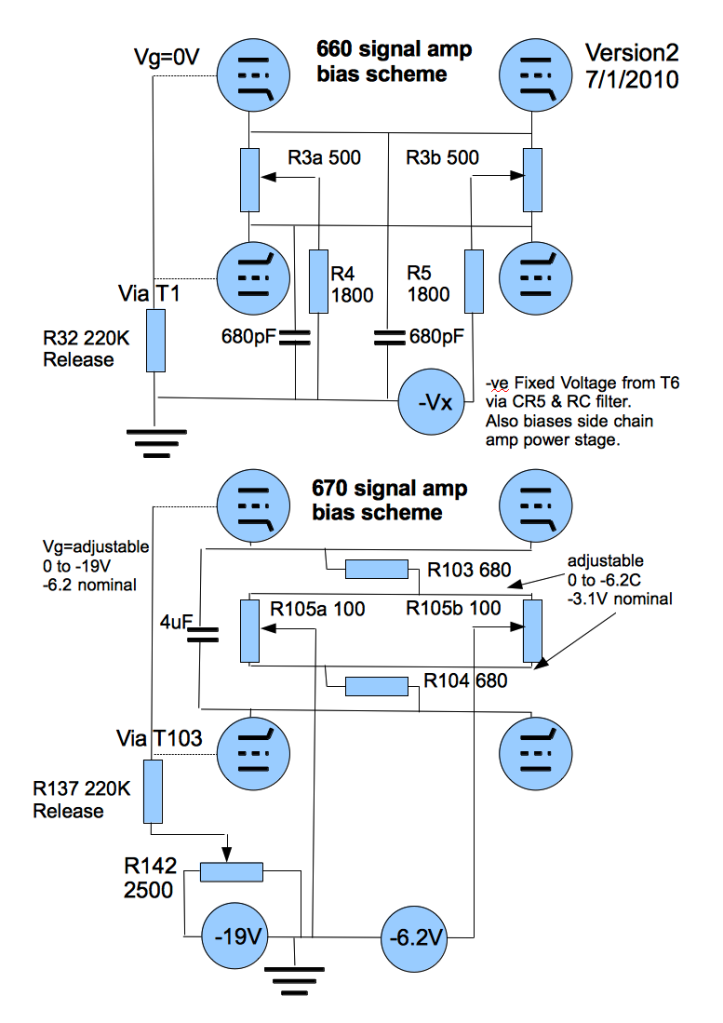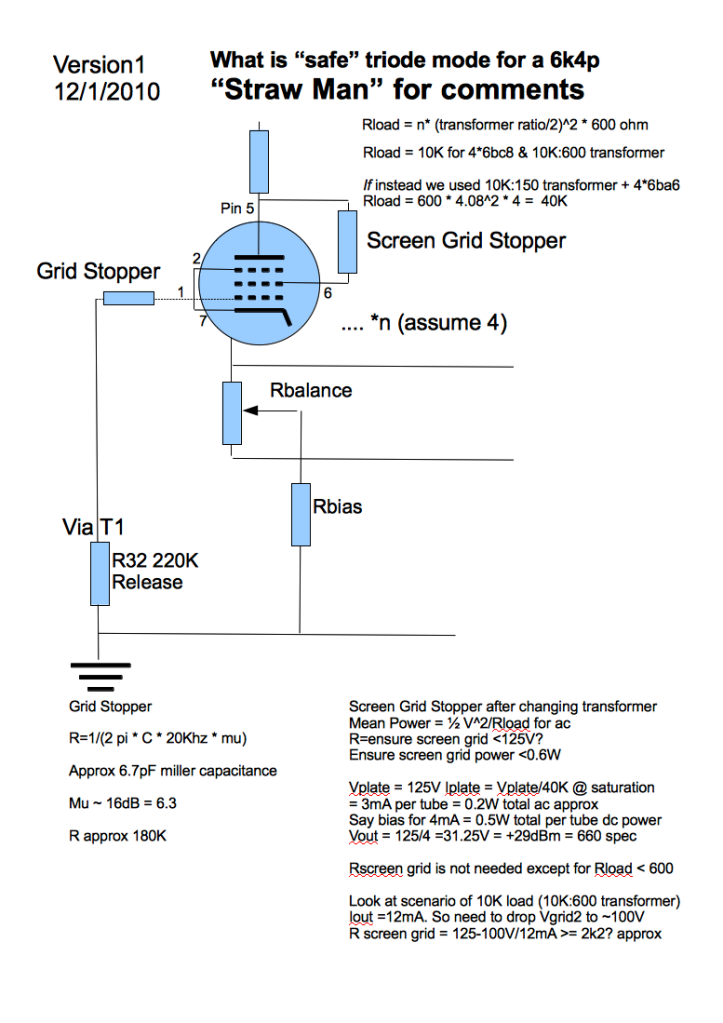MeToo2
Well-known member
[UPDATE. I found component values from the Drip electronics manual for their version of a 660 which has a small extract of the original schematic of a 660 covering the signal amp biasing reproduced on page 56 http://dripelectronics.com/documentation/660_manual_part_1.pdf ]lewilson said:interesting, I build my 660 from the 670 schematic. I could never find a 660 schematic.
So the grids of the signal amp are not fed a negitive voltage. They are referenced to ground through r32 in parallel with whatever happens to be selected for a time constant.
Cathodes are balanced with a negitive voltage tapped from the fixed bias supply for the output tubes.
Also bypass caps on the signal amp are very small compared to the 4uf that the 670 has.
[Update. changed to guess -Vx as 16V after input from Rotheu]
Yes. You are quite correct. And the other thing to note is the position of R104/R105 on the 670 compared to R4 R5 on the 660.
IMHO there is far less "common" long tail in the 670 for signals.
In the 660, the +ve & -ve halves share around 900 ohms of tail (assuming I read the 1800 correctly)
and they have around 125 ohms to themselves from the balance pot (500 set half way in parallel with the other half of the pot assuming I read 500 correctly)
In the 670, the +ve & -ve halves have 680 ohms completely to themselves, whilst the balance pot provides just another ~25 ohms.
But none of it is common to the other half as any current goes straight to the supply.
So the balancing of these two would be pretty different.
And as you correctly point out, the bypass caps are different, but they also bypass different things.
On the 670 it is 4uF in series with 2*(680+25) or around ~ 26 Hz if I'm not mistaken.
Anything above that and the capacitor will dominate.
On the 660 looks to be around 680mmF = old speak for 680pF.
R4 is apparently 1800 and R3 is 500 making 2050 total with 680pF = 105KHz.
Anything below that and the resistors will dominate.
Looks like the bypass caps in the 670 are truly bypass to increase gain at audio frequencies, whereas in the 660 they're only there for high frequency effects.
So they are running quite significantly differently in operation.
Since there never was a stereo version of the 660 (although the link circuit of Rotheu with the diode in the control chain is very clever and would allow stereo linking), it does beg the question of what you want to achieve when building your project. Dual mono 660's, or a 670 with L+R L-r mode, or dual mono 660' s that are linkable (which was not an option on the original)? I personally like the idea of 2 true dual mono 660's (with original 6-position switch-selectable timing chain = "classic" mode) but with a switch to be able to change to the modified timing chain for independent attack and release + the stereo link option = "modern" mode. I mean the cost of the timing chain is peanuts in the whole. That would probably be more useful for me thinking about it further.
I've added the bypass caps on to the diagram and updated the component values.
For the 6v6 (used as the output valve in the 660 side chain amp) you're looking at a grid bias of around -16V on the grid relative to the cathode to stop it melting with Vanode of 300-400V. Since in the 660 side chain, the 6V6 cathodes are connected to ground, that'd make the -Vx fixed voltage around -16V at a guess. In other words (and after some head scratching) Vb = (250+2*1800)/2Ib*4 - 16/2 or Ib should be around 2-3 mA per tube
Any chance of anyone being able to confirm the value of the biasing for the original 660???



































